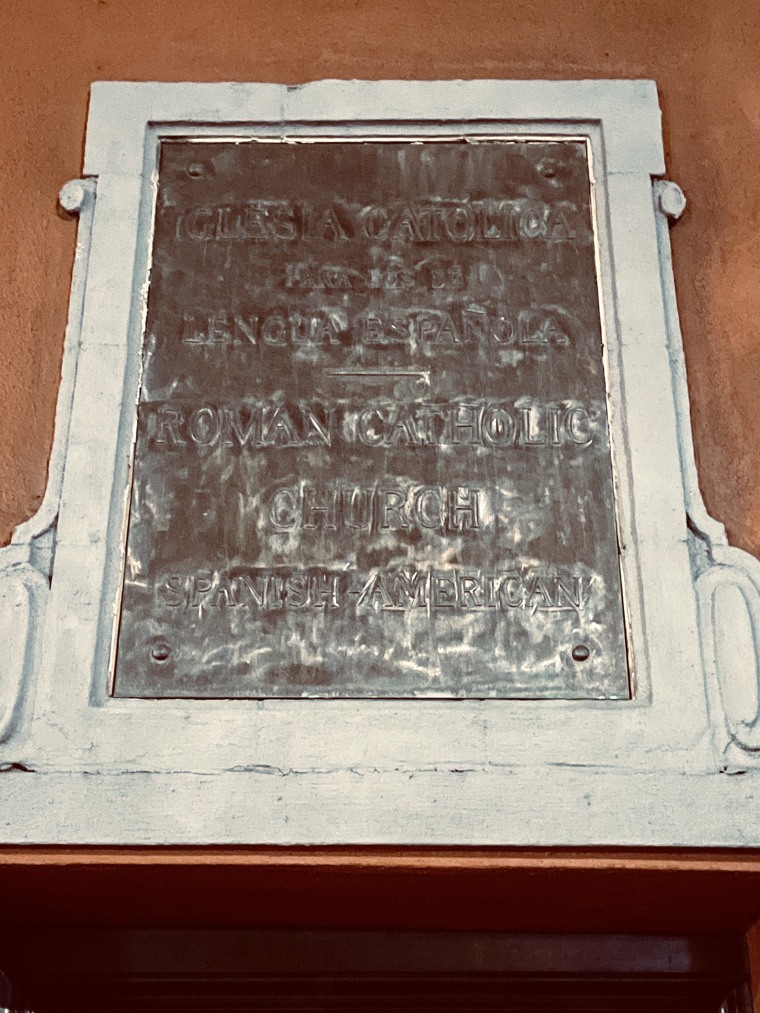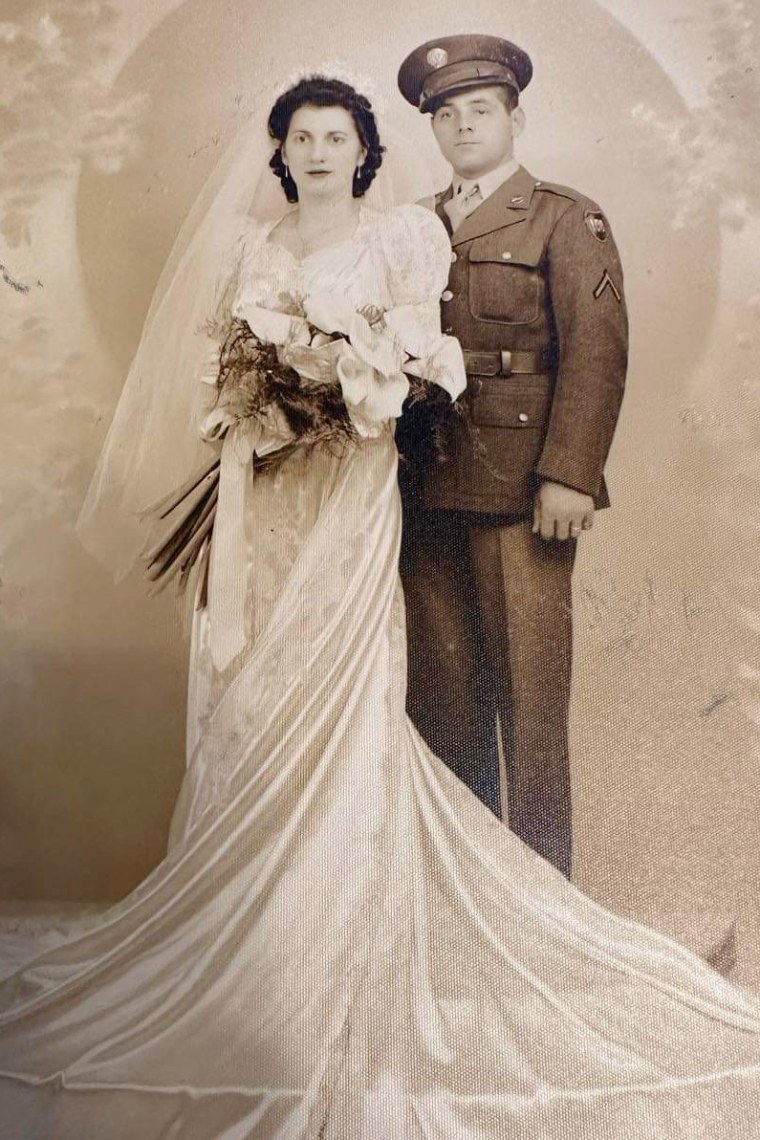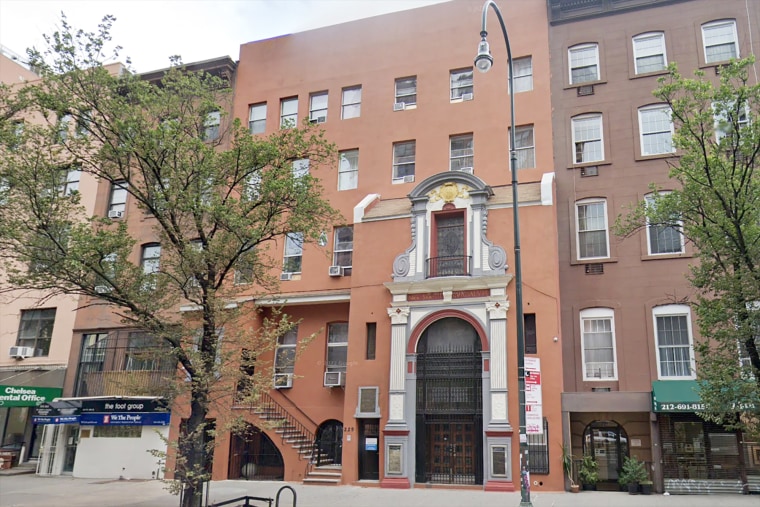Mexican Americans and other Latinos across the country have been lighting candles, offering flowers and praying the rosary; in Illinois, thousands have made their famous annual pilgrimage to mark Our Lady of Guadalupe, the patron saint of Mexico and the Americas.
The feast day on Dec. 12 marks the miracle that took place almost 500 years ago, according to the Catholic Church, when the Virgin of Guadalupe appeared several times to an Indigenous peasant near present-day Mexico City — and as proof left her life-size image marked on a cloak.
But in New York, Our Lady of Guadalupe is also the namesake of the city's oldest Spanish-speaking Catholic congregation, whose founding 121 years ago and its subsequent generations of worshipers are a window into the history of the city's Hispanic and Latino residents.
Some New Yorkers are fighting to keep the church’s original building — with a distinctive Spanish Baroque facade located in two former brownstone mansions — from being altered or destroyed, as it's one of the last remnants of the once-bustling community known as Little Spain.
Our Lady of Guadalupe was founded in 1902 as the first church for a Spanish-speaking congregation in New York City.
To the left of the original building's three-story entrance is a worn plaque that says in the first half in Spanish, "Iglesia Católica para los de la Lengua Española," which loosely translates to "Catholic Church for those of the Spanish language." In the lower half in English, it says “Roman Catholic Church Spanish-American.”

Our Lady of Guadalupe and the Spanish Benevolent Society — the oldest Spanish immigrant club in New York, popularly referred to as La Nacional (The National) — had been the focal points of a thriving enclave of Spaniards during the 1920s through the 1940s, when their population almost doubled in the city, from 14,659 to 25,283, according to "Hispanic New York: A Sourcebook."
“The name of Our Lady of Guadalupe actually comes from Spain — and the original church on 14th Street was in a neighborhood full of Spaniards,” said Monsignor Kevin J. Nelan, who served the parish from 2002 to 2010. “But towards the end of the century, as more Mexicans started to come to New York, they were naturally attracted to the church by the name.”
The church was largely made up of Spaniards, Puerto Ricans and other Spanish speakers, such as Cubans, in addition to Mexicans.
When it comes to cultural significance, said Roberto Sanfiz — the executive director of the Spanish Benevolent Society— Our Lady of Guadalupe is key to understanding how different Spanish speakers in New York came together to forge an early Hispanic community.
“The use of the name ‘Guadalupe’ was specifically chosen to attract many different Spanish speakers in the city, not just Spaniards,” Sanfiz said. “Even though there is a Guadalupe in Spain, it was meant to tie in with the famous Virgin of Guadalupe in Mexico.”
Sanfiz said early Latino food companies like Café Bustelo and Goya Foods, which were founded in the 1920s and the 1930s by Spanish immigrants, also shared a similar goal of connecting other Spanish-speaking Americans beyond those who immigrated from Spain.
In addition, Sanfiz said, ownership of the current brownstone home of La Nacional, which is three doors west of the chapel, was transferred to Spanish-language newspaper publisher José Camprubí in 1924. Born in Ponce, Puerto Rico, Camprubí purchased New York’s oldest Spanish-language newspaper, La Prensa (which today is part of El Diario), as he called on all Spanish speakers in North America, South America and Spain to work together as a community.
A growing Mexican congregation, a new home
The church's location in the West Village neighborhood of Manhattan also meant it was a place of worship for other famous New Yorkers, including Beat poet and author Jack Kerouac and social activist and journalist Dorothy Day.
About a century after the church's beginnings, the old chapel of Our Lady of Guadalupe, on 14th Street between Seventh and Eighth avenues, was too small to house the city's fast-growing Mexican community, according to Nelan, with many having to congregate during services on the street.
Nelan estimates that 1,500 people congregated on Sundays, but the chapel could fit only a maximum of 200.
So, in September 2003, the Guadalupe parish merged with St. Bernard, which had a significantly larger church one avenue west from the chapel — and became Our Lady of Guadalupe at St. Bernard. “The numbers of parishioners at St. Bernard’s had declined dramatically, especially the non-Hispanic population — and the Puerto Rican population was also aging out," Nelan said. "So it was really a perfect fit."
Nelan remembers “hundreds of people the night before the Guadalupe feast day” after the merger. He said that had been happening at the old chapel since the 1990s as the city's Mexican population grew. As a result of the patron saint’s popularity, other churches in New York neighborhoods where Mexicans were settling in started to use the devotion to the Virgin of Guadalupe to draw people to their parishes.
'Like a mother to us all'
But as Mexican devotees in New York look to their patron saint, other New York City Spanish speakers remember the chapel of Our Lady of Guadalupe as an emblem of their faith and identity for multiple generations.
“During World War II, my father only had three days’ furlough to get married. So my parents got married at Our Lady of Guadalupe and had their reception at La Nacional,” said Estrella Diaz, a Eucharistic minister at another Catholic parish in Staten Island, whose family comes from Galicia, in Spain.

Diaz was also baptized at Our Lady of Guadalupe in 1955. And she remembers walking up to 14th Street to visit the chapel when she lived in the Lower East Side of Manhattan.
“Guadalupe was part of the Spanish community, like La Nacional or Casa Moneo,” a store on 14th Street that sold authentic foods from Spain, Diaz recalled. "Any time we were on 14th Street, we’d stop in to light a candle and say a prayer.”
Similarly, Puerto Ricans — who became the biggest Latino group in New York — also found a home in Our Lady of Guadalupe.
In his memoir, Bernardo Vega, a Puerto Rican journalist and author, noted the founding of the church “in what was at that time the heart of the Latin community.”
But while Vega also lamented that the church could not change the negative way many Puerto Ricans were marginalized in the city, other Puerto Ricans found acceptance through the church and their faith.
“I first went to the old capilla [chapel] of Guadalupe 45 years ago," said Giselle León, whose family is originally from Ponce, Puerto Rico, and still lives in the neighborhood. "Both of my children were baptized there. I was going through a tough time in 1978. So I went to the capilla to pray and pray. And I haven’t stopped going since.”
León works at Our Lady of Guadalupe at St. Bernard’s on weekends. She remembers when there were still many Spaniards in the neighborhood and later when big groups of Mexicans started attending Mass at the old chapel.
León sees the saint as a protector who holds all of them together in one community.
“To me, Guadalupe is like a mother for all of us. She intercedes for us. She protects us. She is the patroness of all Latinos. Not just Mexicans, but all Spanish speakers,” she said.
Trying to preserve history
Advocates have been pressing the city to protect Our Lady of Guadalupe's original building with landmark status. The Archdiocese of New York deconsecrated the chapel in January, which would allow the building to be sold in a real estate deal and potentially altered or torn down.
In a letter dated Aug. 3, the Landmarks Preservation Committee said the chapel is “more altered and less architecturally significant” compared to other churches in the city.
The letter also said the parish served other communities in various languages. Therefore, the old chapel “does not appear to possess a strong enough association with a specific community to merit consideration” for landmark status based on its cultural significance alone.
For Andrew Berman, the executive director of Village Preservation — a nonprofit group that helped get landmark status for roughly 1,250 buildings in Manhattan — the commission’s response is “extremely disappointing.”
“There are less than a handful of buildings in all of New York City that are landmarked because of their connection to Hispanic history. And this church’s historic significance is frankly undeniable,” he said. “Hispanic New Yorkers make up about 30% of the city’s population. And if they were their own city, they would be the fourth-largest city in the United States.”
In recent years, Berman said, the commission has designated buildings that have been altered more radically than the chapel. As examples, he referred to the famous Stonewall Inn in Greenwich Village, an important part of LGBTQ history, as well as the Louis Armstrong House in Corona, Queens.
“The changes for the Guadalupe church are relatively cosmetic — and, in some cases, consistent with different generations of the Spanish-speaking community,” Berman said. “That reddish stucco reinforces the Hispanic history of the building.”
'An emblem of our identity'
UCLA professor Charlene Villaseñor Black, a Mexican American art history expert in the iconography of Catholic saints, said that while Our Lady of Guadalupe is a symbol of religious and ethnic identity for many Mexicans, the Guadalupe name comes from another saint in Extremadura — a western Spanish region that borders Portugal.
Devotees described Our Lady of Guadalupe as a dark-skinned woman with long, straight black hair who spoke in Nahuatl — the language of the Aztec and Toltec civilizations in Mexico. And the Catholic Church, Villaseñor Black said, promoted the miracle of the Virgin of Guadalupe to help foster conversion to Catholicism in the 16th century.
Over time, the Virgin of Guadalupe has evolved to become the emblem of social and political movements.
“César Chávez took her on as a symbol of the United Farm Workers. Emiliano Zapata and Pancho Villa both took her on as a symbol of the Mexican Revolution,” Villaseñor Black said. “And Father Miguel Hidalgo, who led the fight for Mexico’s independence in 1810, also took Guadalupe as a symbol for this political struggle.”
In the U.S., according to Villaseñor Black, Our Lady of Guadalupe holds another significance for Latinos.
“I think she is a symbol of resistance to assimilation," she said. "That’s why she’s so prominent in the barrios, our neighborhoods. You see her on walls as an emblem of our identity."
For more from NBC Latino, sign up for our weekly newsletter.
